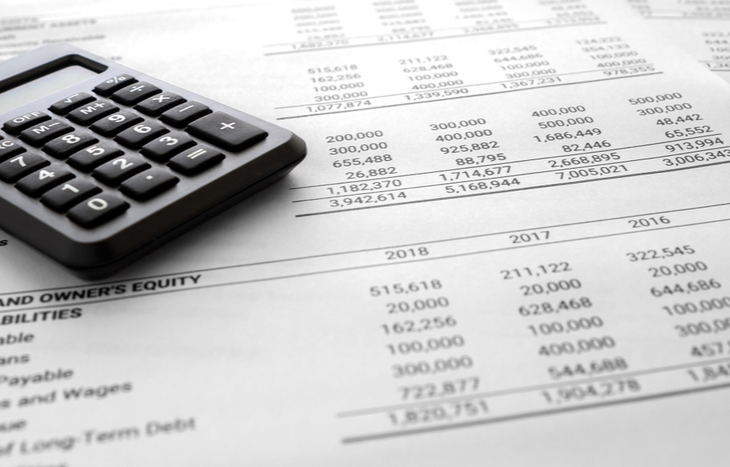What is an Account Statement?
If you have an open account with a financial institution, you’ll receive a statement for that account periodically. What is an account statement? In simplest terms, it’s a summary of the transactions and other activity for that account over a given period. Depending on the type of account, it can also show important information like interest rates, credits, fees and more. It’s a summarized document designed to give you a thorough understanding of how you used the funds in that account or how those funds performed.

Types of Account Statements
While account statements generally serve the same purpose—to depict account transactions over time—they can take different forms. It depends on what type of account you have. Here’s a look at some of the account statements you can expect to see from your holdings:
- Cash Account Statement. This type of statement pertains to your checking or savings accounts, and occasionally money markets. They’re issued by your bank.
- Investment Account Statement. These statements focus on your investment accounts and retirement accounts. Your brokerage or account trustee will provide them.
- Debt Account Statement. This is your credit card statement, mortgage statement or the like. It’s a representation of your efforts to pay down outstanding debt over time.
- Interest Statement. This is a representation of interest accrued for a particular account or dividends paid into it. It’s typically issued at the end of the year, for tax purposes.
One of the other differentiators between account statements is how often they’re issued. Interest statements typically only go out once per year (sometimes quarterly). Cash and debt accounts usually generate account statements monthly. Investment or retirement accounts can vary, issuing statements monthly, quarterly, semi-annually or annually.
It’s important to note that some accounts will not generate a regular account statement unless they’re active. This usually means at least one transaction per month. Don’t expect regular statements for dormant accounts.
What’s on an Account Statement?
You don’t need a finance degree to understand an account statement. In fact, most are very simple and straightforward—often succinct. They key is knowing which information to expect and look for:
- Period. This is the date range for transactions displayed on the statement. Each new statement will pick up from the end of the last one, to represent the same interval.
- Transactions. This is a complete list of cash inflows and outflows, be it debit and credit or deposit and withdrawal. It will also include amounts and dates executed.
- Balance. This is the current balance in the account, representing available funds after tallying all debits and credits.
- Account Info. This is typically your personal information, as well as the account number. Many statements also include interest rates and, for debt accounts, terms.
Some statements will have more information included with them. For example, your 401(k) statement might have an allocation breakdown of your current funds included. Take the time to read through the statement and review the information, regardless of the statement type.
How to Read an Account Statement
Reading an account statement—also called reconciling it—is simple and should become routine for anyone following their wealth. It’s a quick process that should only take you a minute or two (unless there’s a problem).
Start with the balance and make sure it’s in the ballpark of where you expect it to be. If it’s higher or lower than expected, start to investigate why by looking at the list of transactions below. Look for any debits or credits that look out of place and note any unanticipated gains or losses. Once you’ve reviewed the transactions, look at any extraneous details to check for changes, such as interest rate or allocation.
If everything adds up, use the knowledge you’ve gleaned from reviewing the statement to inform financial decisions regarding that account or for your greater financial picture.
The Benefits of Reading Statements
Why take the time to read an account statement? In the age of digital data, you can pull up account data at any time. Reading a statement each month gives you a focused, specific view of your account during that time, so you can make informed insights. It’s a great way to narrow focus and get a handle on a specific segment of your finances.
The other chief benefit of reading account statements is the ability to spot errors or fraud. Bank errors can credit transactions twice, or you might find a mistyped amount that affects your account balance. Worse, you might find that someone took money from your account or made an unauthorized transfer. Account statements are a transparent look at what happened over the last month (or other period). Drilling down into the details gives you a firsthand opportunity to remedy a mistake that might otherwise go unnoticed or get worse with time.
Learn From Your Account Reports
What is an account statement? Beyond a list of transactions, it’s a wealth of information about patterns and behaviors. It can yield valuable information about cash flow, account performance or transacting sources. Or, it can inform you about spending or saving behaviors you weren’t immediately privy to. At the end of the day, it’s an important tool in understanding your current wealth (or debt) and how it came to be.
For more financial tips and investment trends, sign up for the Investment U e-letter below. You can gain valuable insights no matter your current experience level.
There’s a good chance various account statements show up in your inbox or your mailbox each month. Instead of tossing them in the trash, take the time to inspect them closely and look for information beyond the surface numbers. A little investigation of your account statements can go a long way in explaining the current balance.





